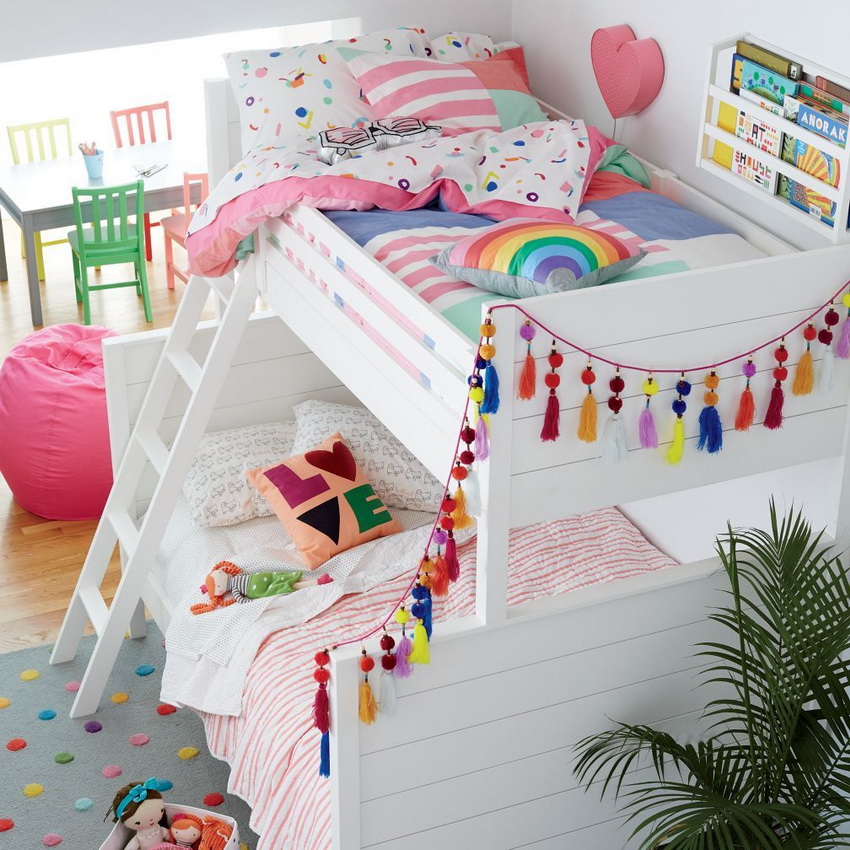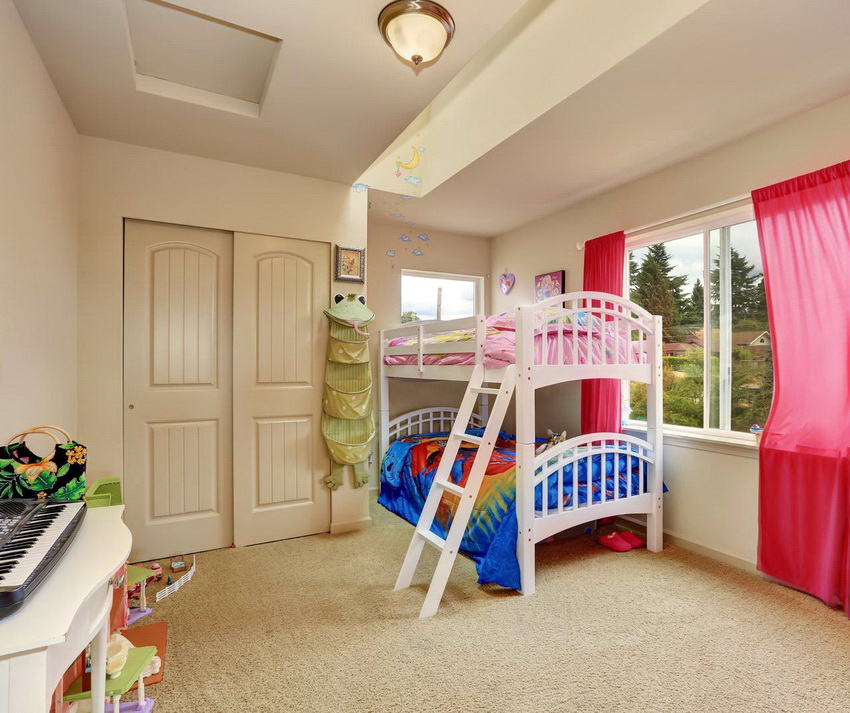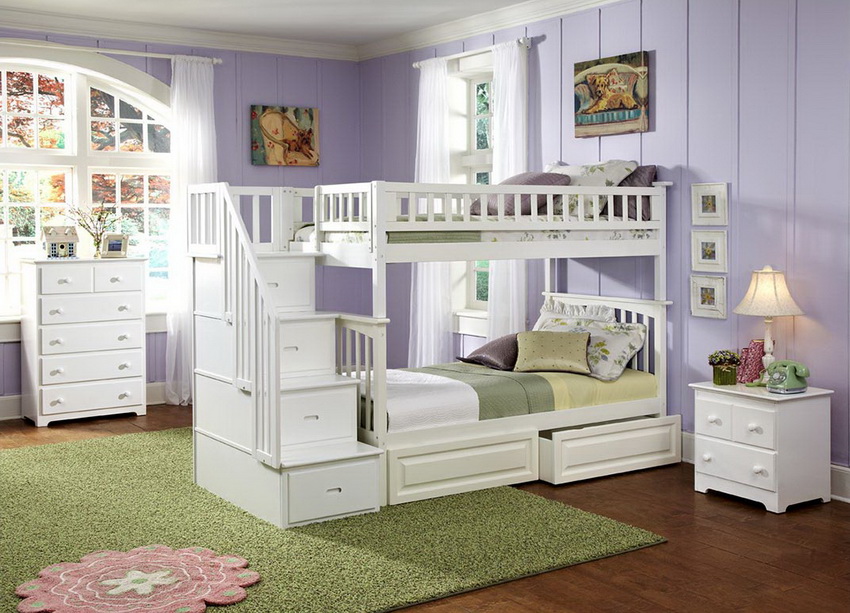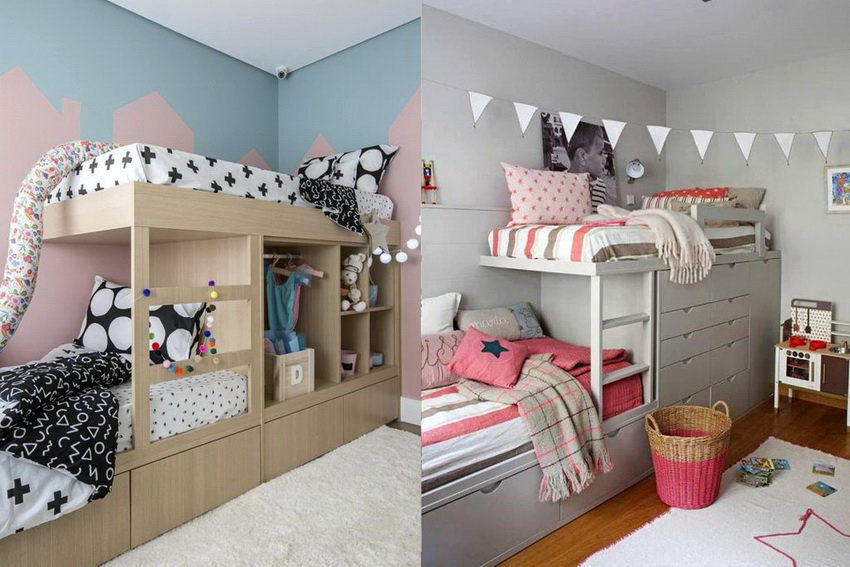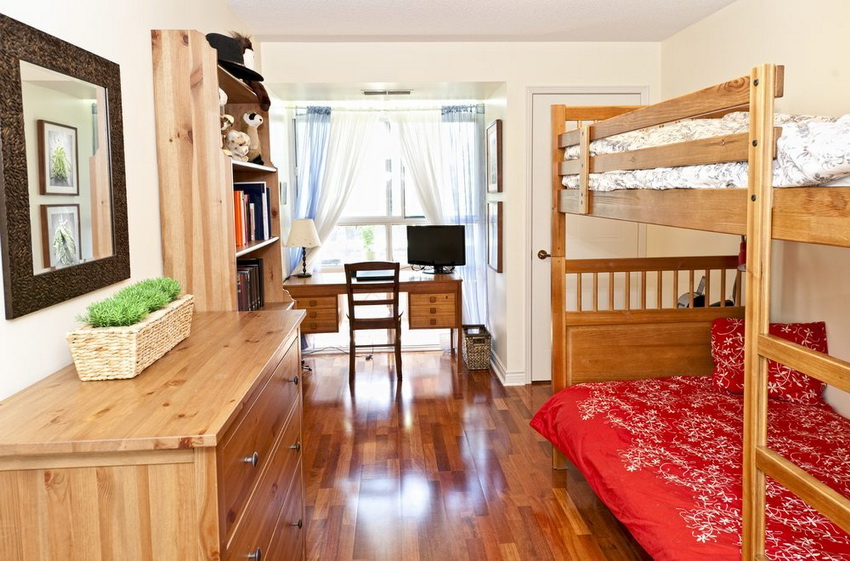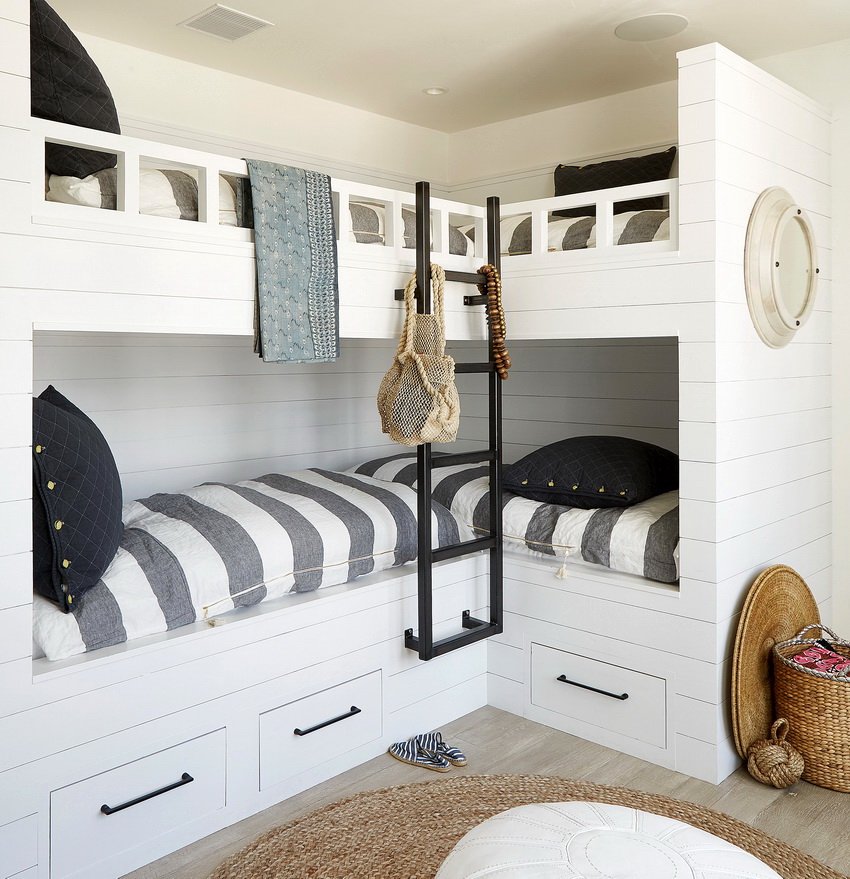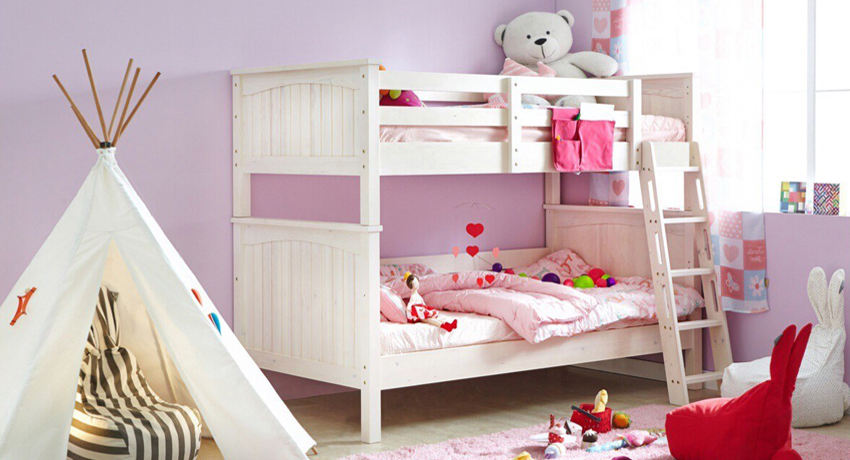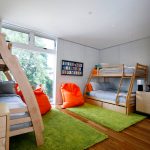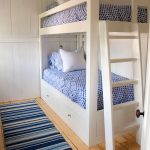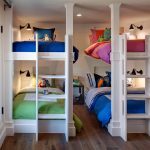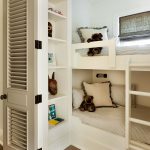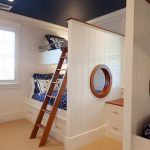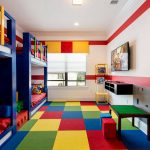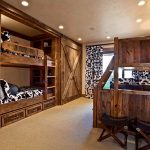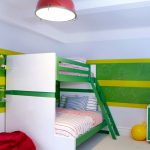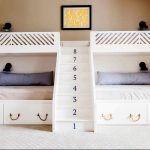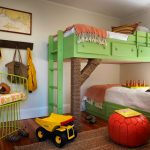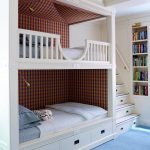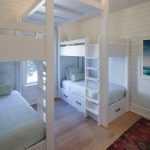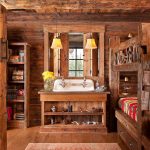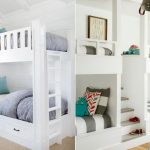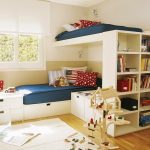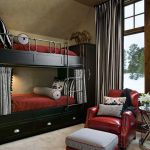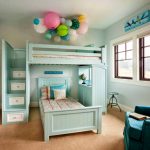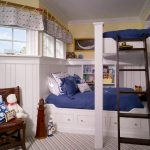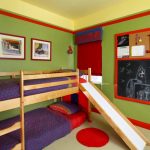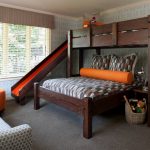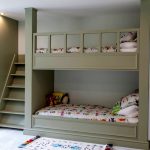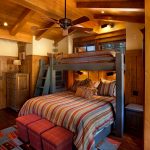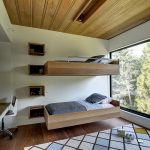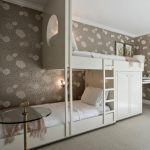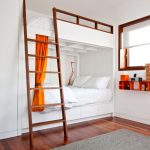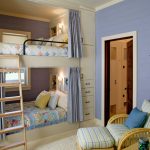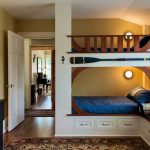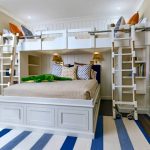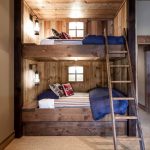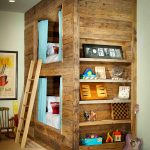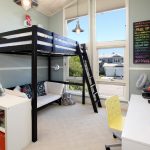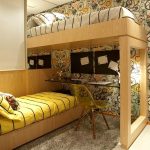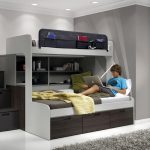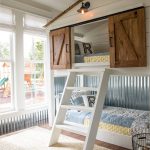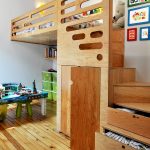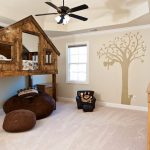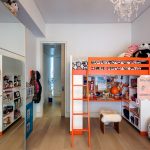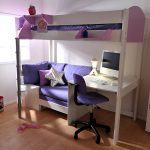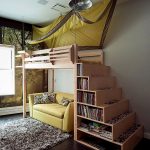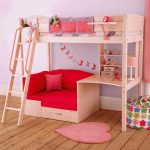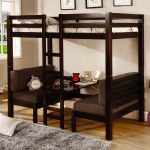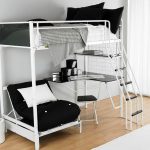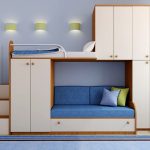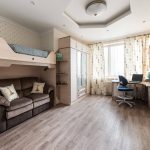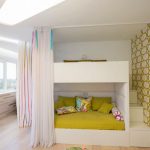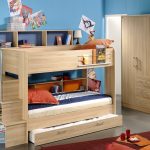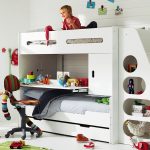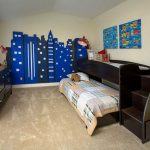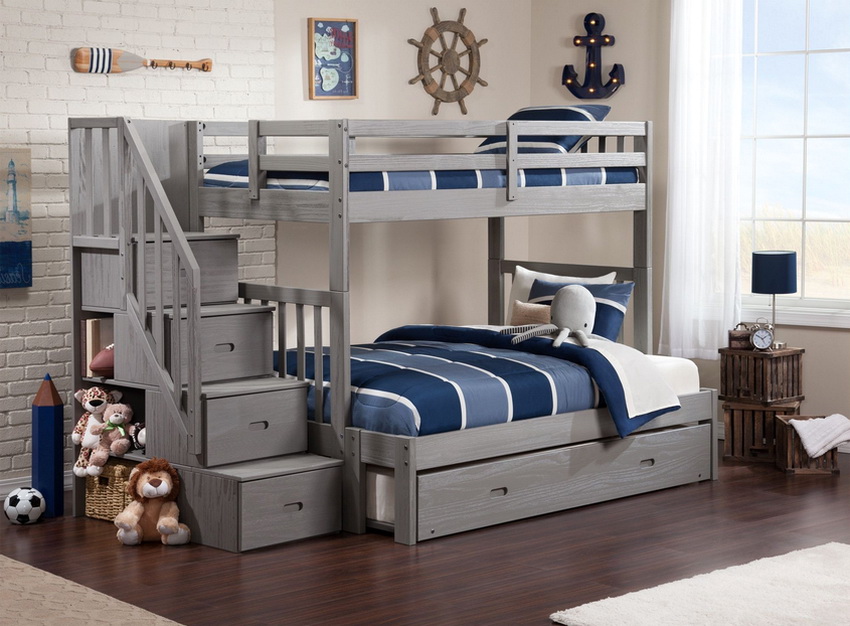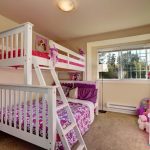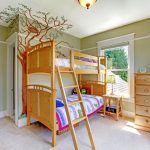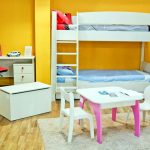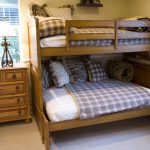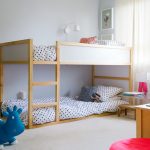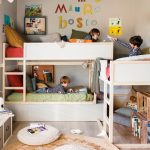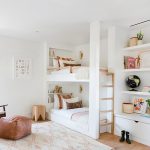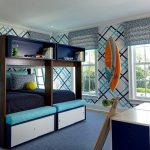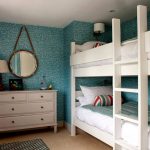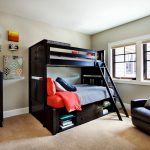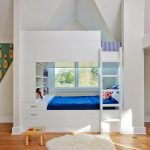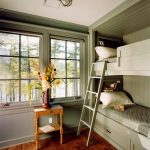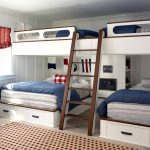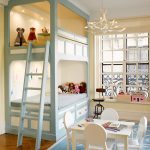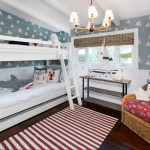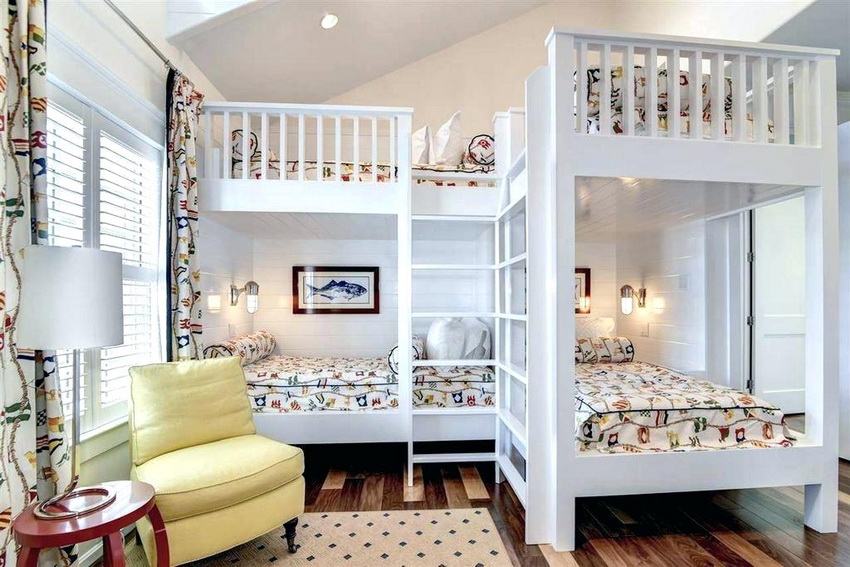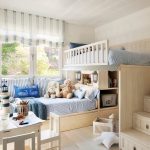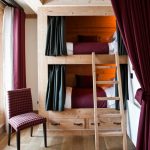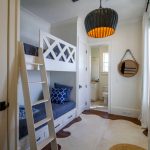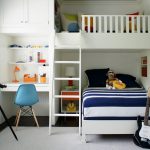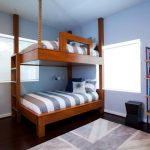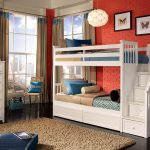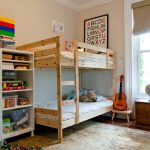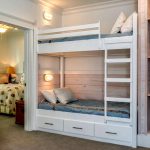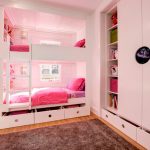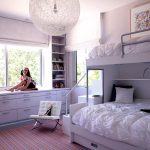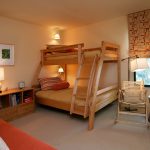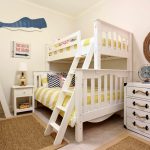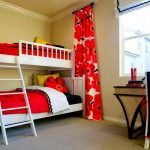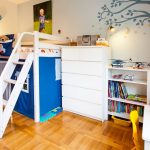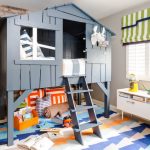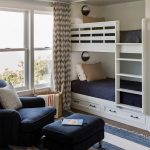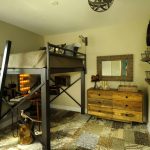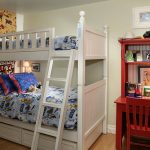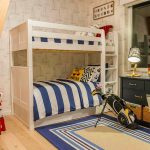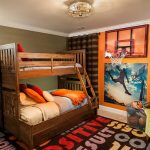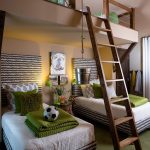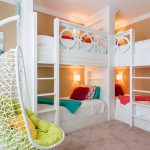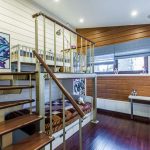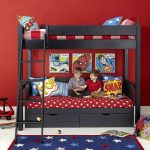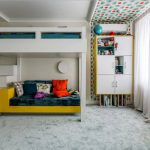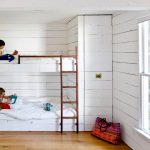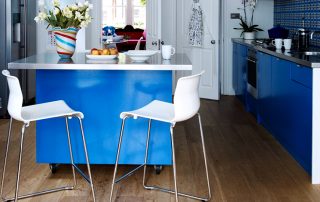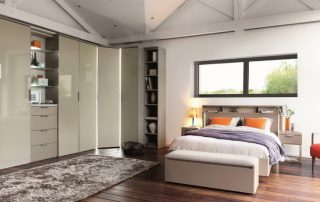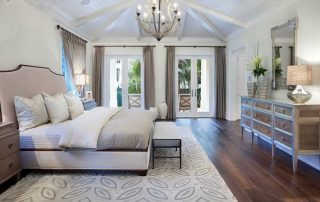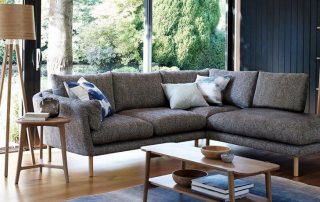Many parents are concerned about saving space in a small children's room, where it is necessary to organize not only comfortable sleeping places, but also equip an area for games, classes and a storage system. A bunk bed for children will help to solve this problem. This design will not only give the room uniqueness and individuality, but also open up new opportunities for activities and games. What are the options for this multifunctional element, this article will tell you.
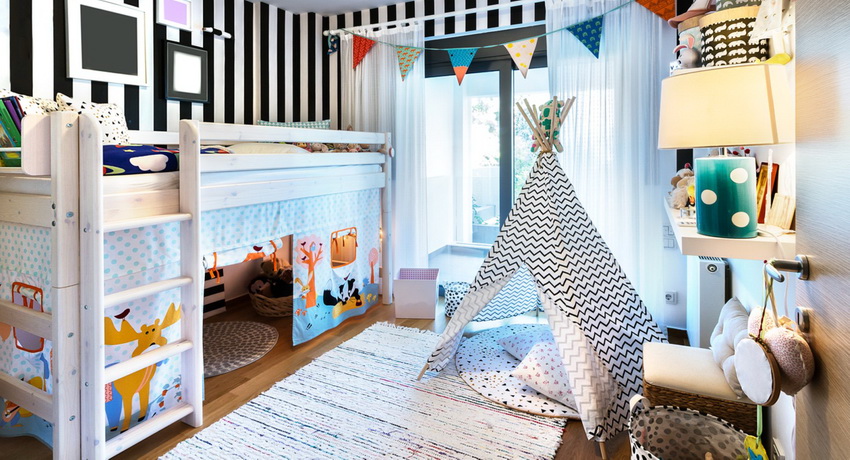
Bunk bed allows you to save the living space of the room in the best way
Content [Hide]
Children's bunk bed: the main advantages of the design
A children's room should simultaneously combine comfort, functionality and safety. These requirements are especially relevant when several children live in it. An important point in organizing the nursery space is to preserve sufficient space for active games.
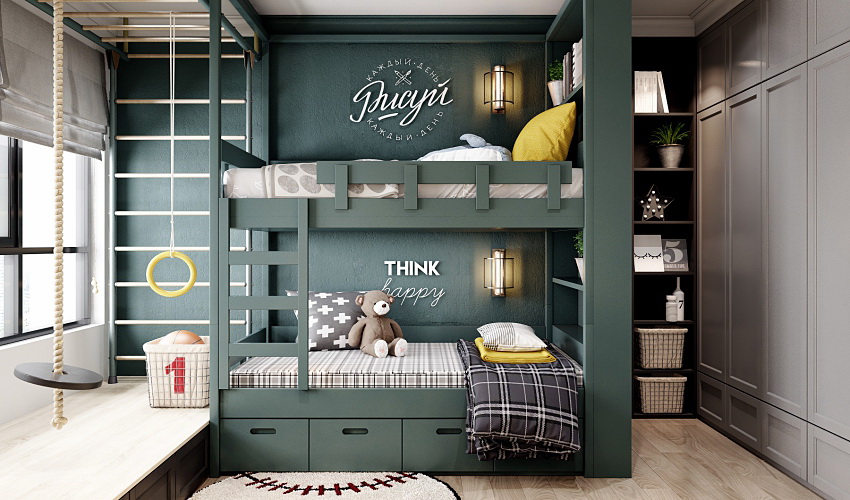
Choosing a bunk bed should take into account the age of children, calculated for 5-7 years of operation
Traditional single beds and fold-out sofas are tough to handle. The way out is to install a children's bunk bed, the size of which must be selected taking into account the child's growing up over the next 5-7 years.
This furniture has a number of advantages. Since it takes up vertical space, more room is freed up. This is especially important for small rooms. This design allows you to visually increase the size of the room, since it is not overloaded with unnecessary furniture.
The bunk bed is a multifunctional element. It can be used not only as a sleeping place. A well-designed design makes it possible to organize a storage system, equip a play and study area. Drawers, shelves, mobile modules can be placed here. The model can be supplemented with adjustable lighting, wall bars and game attributes.
A bunk bed does not necessarily have two berths.There are many models in which the space under the upper tier is occupied by play, sports or work areas. A bunk double bed will be the perfect solution for large families.
Such structures are made of non-toxic materials, have rounded corners, high sides on the upper tier, a stable ladder and soft edges, which makes the bed safe for children.
Little owners will simply be delighted with such an unusual piece of furniture, where everyone will have their own separate place, which can be decorated as they wish. Bunk bed for boys can turn into a ship or a fortress, and girls will love a cozy house or a fairytale tower.
The main disadvantages of bunk beds for children
Despite the undeniable advantages, the bunk bed for children is not without its disadvantages. Many parents are concerned about the safety of the child who will sleep on the second tier. It is not recommended for children under 4 years of age to be upstairs, especially if the child is prone to high activity.
Warm air collects in the upper part of the room, which may be too heavy for the baby to breathe. This is especially true in very warm rooms. Therefore, it is necessary to ventilate the room with high quality and regularly.
The sleeping place on the upper tier is inconvenient to put in order for a small child. This task will have to be performed by the parents. If the children have a small age difference, conflicts may arise regarding the question of who will sleep upstairs. In this case, it is important to competently and fairly think over the system of distribution of seats.
A bunk bed is a heavy and bulky structure that is difficult to move to another place. In addition, a specific model is selected taking into account the selected location. It may not fit into another room in the event of a move.
A solid structure made of high-quality material can last for many years, but it has a high cost, and this point is important to consider when choosing a product.
Varieties of children's bunk beds: photos of the original models
One of the main advantages of bunk beds for children (the photo clearly confirms this) is the variety of types of structures. From among the existing models, you can select the ideal option in accordance with the child's ideas about personal space and the requirements of the parents.
The entire diverse assortment of bunk beds can be divided into separate groups: by the number of beds, by type of construction, by material of manufacture, for children of different ages, for children of different sexes.
Bunk beds can have from one to four beds and, depending on this, are divided into 4 categories. The first includes two-tier structures designed for one child. The sizes of the berth are very different. For small rooms, you can equip a single bed. In a spacious room, it is recommended to install a one-and-a-half structure. If same-sex young children sleep on it, bed can be double.
The sleeping place is on the second tier. The first is set aside for a work or play area. Here you can find a comfortable desk and open shelves for toys. Part of the space or the whole area can be set aside for a storage system in the form of drawers, shelves, shelves, cabinets and dressers.Clearly different models are presented in the photo of bunk beds for children with a table, wardrobe and other furniture elements.
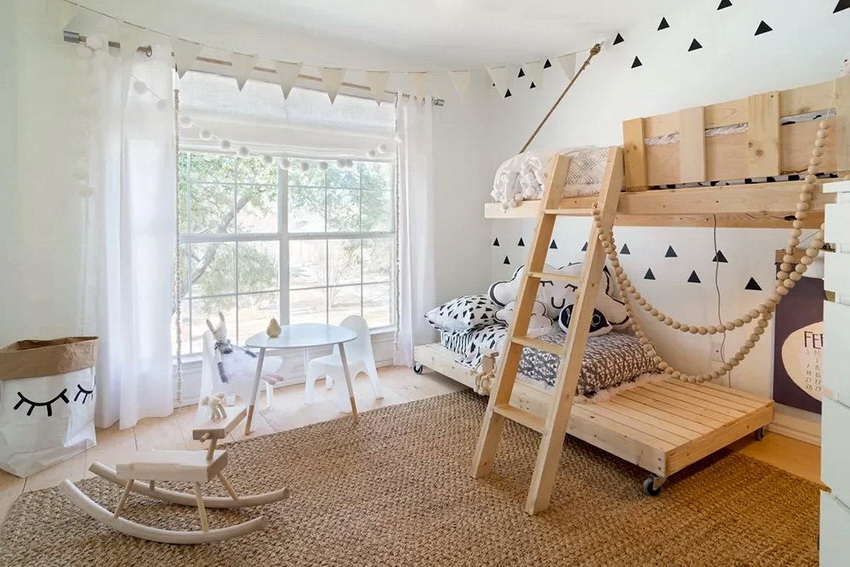
Wood remains the most popular material for making cots due to its environmental friendliness
Models with a play complex, which is located under the upper tier, cause great delight in children. This option is preferred by families that pay attention to the physical education of the child.
Bunk bed options for two or more children
The second category is represented by classic designs with two separate berths, which can be placed in parallel, perpendicular or offset relative to each other, which is clearly shown in the photo of children's rooms with bunk beds.
Models with a sofa on the lower tier, which transforms into a wide bed, look interesting and unusual. The laundry compartment can be located under it. A children's bunk bed with a sofa downstairs will be preferable for sociable children who are often visited by guests.
Helpful advice! Parents can sleep on the sofa on the lower tier, which is ideal for families living in a studio apartment.
Bunk beds-transformers that turn into sofas will look interesting and unusual. Such designs do not require a lot of free space and are easy to operate.
The third category includes bunk beds for children with three berths. The standard model of this design has the form of an L-shaped non-separable frame with two beds at the top. The lower berth is adjacent to the play or work area. This design requires a lot of space. For small rooms, the most rational solution is a bed with three pull-out tiers.
There are models with three separate levels located perpendicular to each other. This option is advisable for apartments with high ceilings, in which children of senior school age live.
Related article:
Diy bunk bed: assembly steps for different design options
Varieties of designs. Optimal dimensions. Manufacturing material. The sequence of assembling a bed made of wood, chipboard and metal.
A successful model is a bunk pull-out bed, in which the lower floor turns into a double bed, which is convenient for same-sex children.
The fourth category includes beds designed for large families. The berths are united by a strong frame. Two beds are on the first floor, two on the second. These models have no functional area.
Design options for bunk beds for children
There are four types of bunk beds:
- classic model;
- loft bed;
- transforming bed;
- construction with additional functional elements.
The classic design is represented by a solid or prefabricated frame, in which the upper and lower tiers are located strictly parallel to each other. In this case, berths are isolated. A staircase with steps or rungs is provided for climbing to the second floor.
There are several modifications of the classic design. Sleeping places can be shifted to the left or right side relative to each other. In this case, the freed up space can be used to organize a storage system. Interesting models are presented in the photo of bunk beds for children with a wardrobe, a chest of drawers and a pencil case.
Sleeping areas can be located perpendicular to each other or crosswise.This option gives free rein to the imagination for organizing the bedside space, which is easy to supplement with other furniture modules. Here you can equip a work area with a desk, organize a storage system for books, toys, clothes and other things. Interesting ideas for arranging a bedside space are shown in the photo children's rooms with a bunk bed.
Bunk beds with a table and other furniture items
The loft bed is designed for one child. The sleeping place is located on the second tier. Under it, you can organize an open area or arrange a multifunctional storage system for toys and things. A pull-out table will be useful here, where both a preschooler and a schoolchild can study. It is important that it is equipped with a good lighting system. Different options for this design can be seen in the photo of children's bunk beds with a table below.
In an open area, a live or sports corner is often equipped. The side of the bed can be used for organizing the wall bars, where the child can do morning exercises.
Helpful advice! A bunk children's bed with drawer stairs, the upper part of which is a step, will allow you to get a spacious storage system.
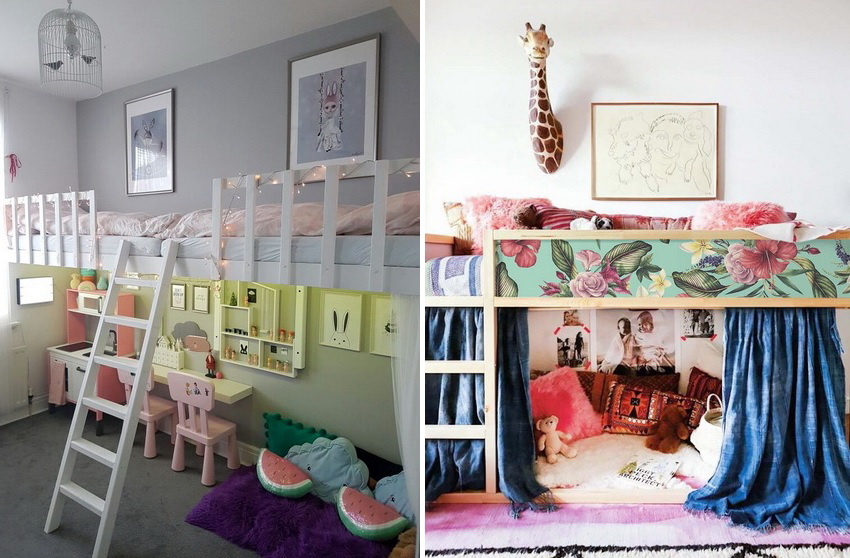
If the family has one child, and the room is small, they often equip a sleeping place on the second tier, allocating the lower space for the play area
Currently, some manufacturers are producing loft beds for two children. Such designs are represented by angular models. Sleeping places are equipped with a common headboard. Separate functional areas are located under them. Different design options can be seen in the photo of corner bunk beds for children.
Products with additional functional elements are the most complex set. One or several sleeping places can be organized here, different wardrobes, pencil cases, open shelves, drawers and baskets can be installed, which is clearly shown in the photo of children's bunk beds with a table and other furniture elements. At the same time, the ladder is located anywhere.
Varieties of children's bunk beds-transformers
Convertible beds can be presented in several designs. Such structures are additionally equipped with a mechanism due to which its individual elements are pulled out and then hidden back. There are five types of multi-tiered transformers:
- retractable;
- sliding;
- folding;
- folding;
- modular.
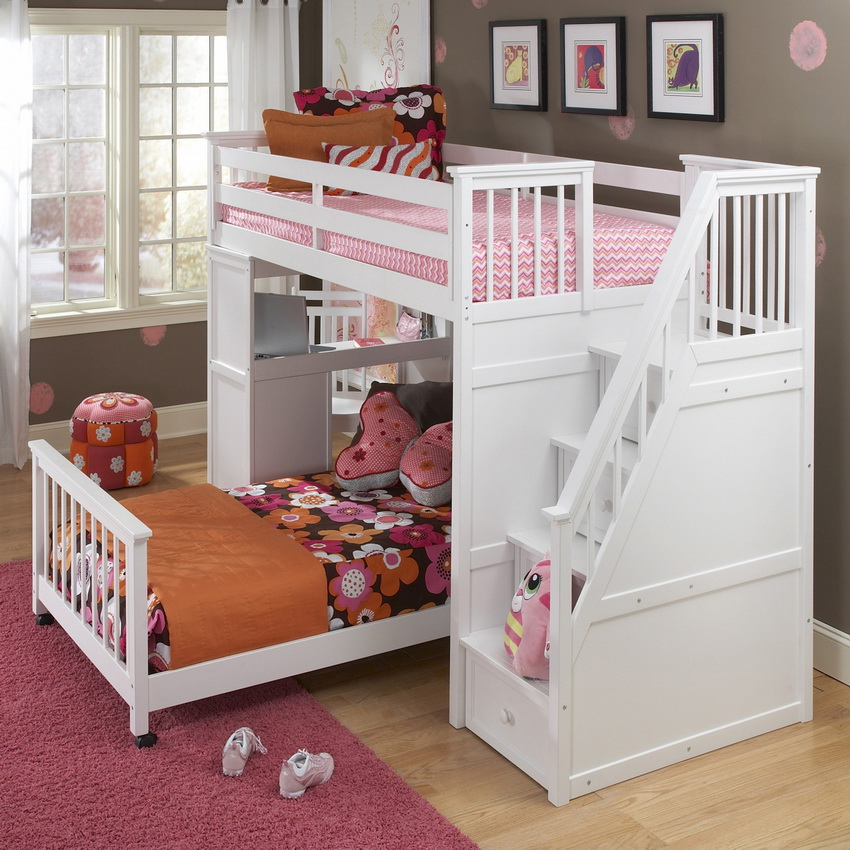
Bed models with perpendicular placement are suitable for small bedrooms - they can be installed both in the middle of the room and in the corner
Folded children's bunk bed takes up the space required for a single bed. Thanks to the simple roller mechanism, which the lower tier is equipped with, you can get a double or triple bed by pulling one tier from under the other. If the model has a roller mechanism, then the lower part will be located in the unfolded form close to the upper one. If equipped with helium casters, the lower bed can be moved anywhere in the room.
Helpful advice! For families with three children, the most affordable and practical option is a pull-out bed with three levels.
The extendable bed has a frame that can increase in length by 50-80 cm. The set of such a design necessarily includes a special mattress, consisting of soft elements that are gradually added as the size of the bed increases.
The foldable design at night looks like a regular bed with parallel berths. In the daytime, the frame transforms into a vertical panel. All the mechanisms of the bed are located so that the structure can be folded and unfolded easily and safely for the child.An interesting modification of this type is a bed with a podium. In this case, the berths roll out from under it. A convenient storage system can be organized at the base of the podium.
Helpful advice! A bed with a podium is suitable for rooms with high ceilings.
The folding design is similar to the previous version. The main difference of this type is the possibility of organizing a work area or storage system at its base.
The modular bunk bed consists of independent elements that can be freely moved, combined, removed or added, thereby optimizing the interior space. Many of the building blocks of such a constructor are interchangeable.
Choosing a bunk bed with bumpers for children of different sex and age
For families living in standard apartments, children, regardless of age and gender, mostly share one room for two or three. When choosing a bunk bed, it is important to consider the age and gender of the children. For same-sex small owners, it is much easier to decide on a model than for opposite-sex ones. Bunk beds for girls and boys up to 7-10 years old can have a classic design. In this case, the youngest child must sleep on the first floor. This option is relevant for children with a difference of 3-5 years.
For same-sex babies, you can use almost any bed option. For children of different sexes, a classic design is suitable, as well as a roll-out transforming bed on helium wheels, the lower tier of which moves to any convenient place. A universal solution is a children's bunk bed-house.
For weather children under the age of 4, bunk beds are suitable for newborns and toddlers. These are low, durable structures with reliable bumpers, equipped with a convenient storage system. A good alternative to such models is a loft bunk bed with a carrycot below.
Helpful advice! The upper and lower tiers of this version of the bed should be at a sufficient distance from each other so that the whims of one and the activity of the other child do not interfere with a healthy children's sleep.
Children over four years of age can sleep on the top tier with a side board. It is advisable to equip the lower space under the sleeping places individually for each child, based on his personal preferences. Different options are clearly shown in the photo of children with a bunk bed.
If a preschooler and a teenager live in the same room, it is recommended to purchase a transforming bed, in which sleeping places are divided into independent elements. A successful solution is a bunk children's bed with a wardrobe of a complex design, where sleeping places are delimited by this functional piece of furniture.
Material for making bunk beds
The practicality, reliability and durability of the structure directly depend on the material of manufacture. The use of low-quality raw materials adversely affects the life of the bed.
The sturdy frame of children's furniture can be made of wood or metal. There are models where both materials are successfully combined with each other. The design of the bed can also be complemented by decorative inserts made of textiles or plastic, which is clearly shown in the photo of bunk beds for children and adults.
Different types of wood are used as raw materials for wooden beds. Pine is the most commonly used. It is a strong, durable material that can withstand significant mechanical stress, while maintaining its original appearance.Being pliable in work, pine massif allows you to make a structure of any complexity and configuration. The material lends itself to decorative processing of any complexity: wood carving, burning, brushing and painting. Bunk beds-houses for children look original and unique in wooden design.
For bunk beds, you can use solid birch, which has a lower price compared to pine. The material is characterized by strength and durability. It has bactericidal properties and is odorless, which eliminates the risk of allergic reactions.
Oak products are endowed with the highest strength characteristics. Such structures are able to serve for more than a dozen years without losing their operational and aesthetic properties. However, solid oak bunk beds are the most expensive.
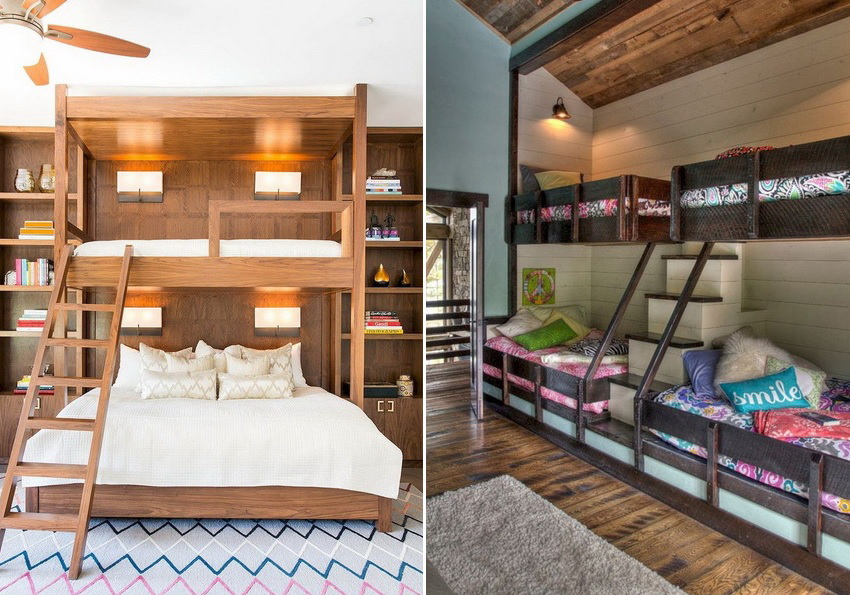
Pine and birch are less expensive in comparison with oak and are almost equal to it in characteristics
Bunk beds for girls and boys from recycled wood and metal
Children's solid wood bunk beds are very expensive. Cheaper options are made from edged boards, plywood, MDF, chipboard or wooden board. All options have good technical and operational characteristics. However, in matters of strength, wear resistance and durability, they are inferior to solid wood products. Bunk beds for children made from recycled wood are more affordable.
Metal structures are no less popular today. The material is characterized by strength, damage resistance, durability. Metal products are able to withstand not only children's weight, but also the weight of two adults. At the same time, the bed is lightweight compared to a wood product, which is achieved through the use of hollow pipes.
The surface of the children's bunk metal bed is covered with powder lacquer, which protects the material from scratches and corrosion. The coating can be painted with any color.
There are combined models with forged backs and legs combined with a wooden frame. The combination of materials is also used to create transforming beds, in which the base of the structure is assembled from wood and the pull-out elements are made from metal. A children's bunk bed with a sofa looks stylish and unusual in a combined design.
Bunk beds are very popular among modern parents, who, overcoming their fear that the child may fall from a certain height, increasingly prefer just such designs. This is due to the compactness, increased functionality, and reliability of the product, which, thanks to its original design, will noticeably decorate the interior of the room and fill the atmosphere of the room with coziness and comfort.
